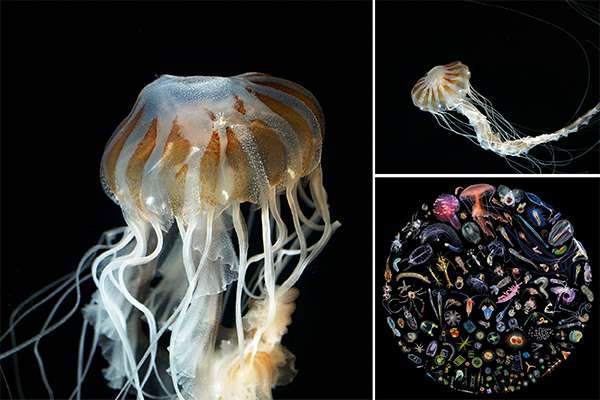A groundbreaking study in a leading scientific journal is offering a broader picture of plankton life in the Gulf of Mexico.
Dr. Kelly L. Robinson, an assistant professor of biology at the University of Louisiana at Lafayette, and Dr. Su Sponaugle, a professor of integrative biology at Oregon State University, led the study. Science Advances published the report online on Nov. 19.
In it, the researchers document, for the first time, the simultaneous position, size and density of patches of 36 different types of planktonic organisms.
Plankton are small sea creatures at the base of marine food webs. They provide sustenance for fish and marine mammals and birds and generate oxygen, Robinson explained.
“Understanding the distribution and patchiness, or arrangement, of plankton is important for evaluating the efficiency and production of marine food webs, as well as predicting how populations of plankton will change as ocean conditions change with global warming,” she said.
Researchers found the smallest organisms formed the largest patches. Patches were also larger and more frequent in shallow waters closer to shore than more-distant deeper ocean waters.
“Because of their distribution in an expansive area that is challenging for humans to sample, we have an incomplete knowledge of the dynamics of planktonic organisms in the ocean,” Sponaugle said.
To answer that challenge, researchers coupled high-speed underwater imaging technology with advanced machine learning approaches that enabled them to measure the natural, undisturbed positions of 32 million organisms in subtropical waters off Florida.
These organisms included both plants and animals, representing 12 phyla, and ranged in size from 200 micrometers – about the width of two human hairs – to nearly 8 inches.
Robinson said the “patchiness” of different organisms in the water column has important repercussions for the marine food webs.
“Results of this study set the stage for scientists to ask key questions about which biological and physical factors drive plankton patch formation and how patchiness influences food web efficiency.
“These data conclusively show that the average background density of plankton measured by traditional sampling gear such as nets that integrate over the water column does not represent the actual biological environment an individual planktonic organism experiences,” she concluded.
In addition to Robinson and Sponaugle, the team of researchers who contributed to the study include Dr. Jessica Y. Luo at the National Oceanic and Atrophic Administration’s Geophysical Fluid Dynamics Laboratory, who contributed to data collection, image analysis, and drafting of the manuscript.
Dr. Robert K. Cowen, director of OSU’s Hatfield Marine Science Center, conceived the study with Sponaugle and participated in data collection and interpretation. Dr. Miram R. Gleiber, a former OSU doctoral student, also helped with data collection.
A copy of the paper can be found online at the Science Advances website. Science Advances is the American Association for the Advancement of Science’s open access multidisciplinary journal. It publishes research papers and reviews in all areas of science.
Photo caption: Dr. Kelly L. Robinson, right, is an assistant professor of biology at the University of Louisiana at Lafayette. She led a study that’s offering a broader picture of plankton life in the Gulf of Mexico. (Photo credit: Doug Dugas / University of Louisiana at Lafayette)
